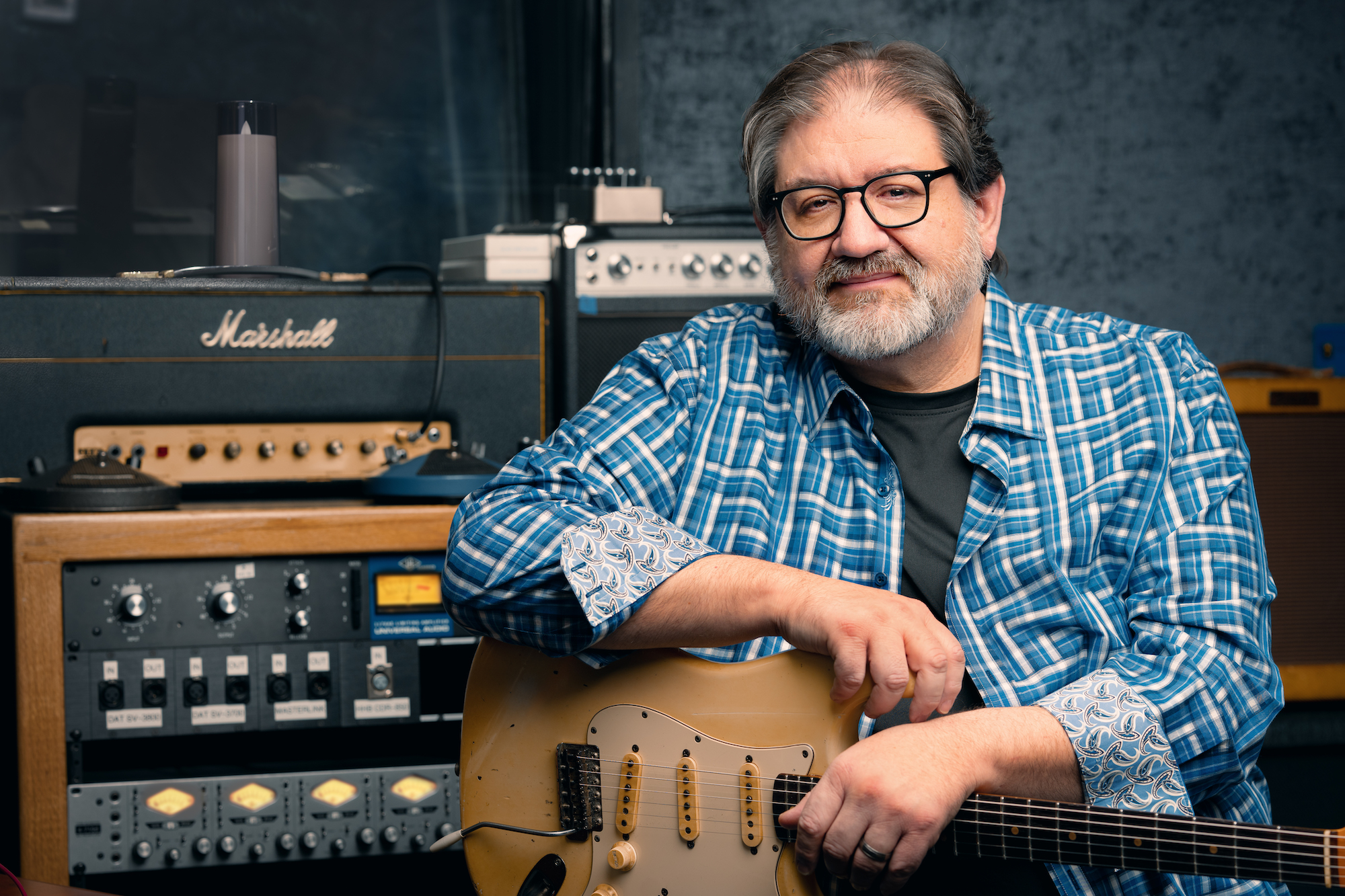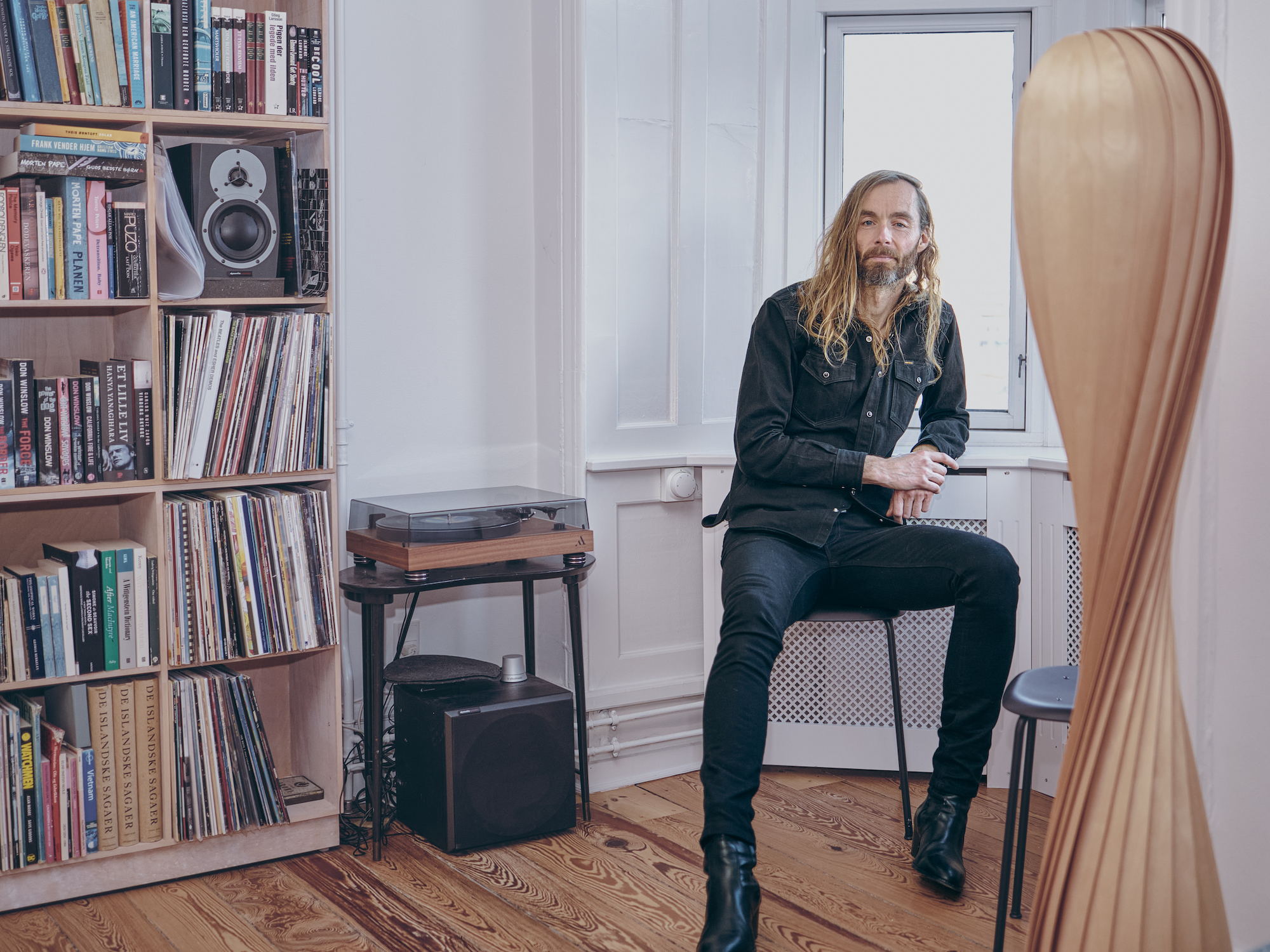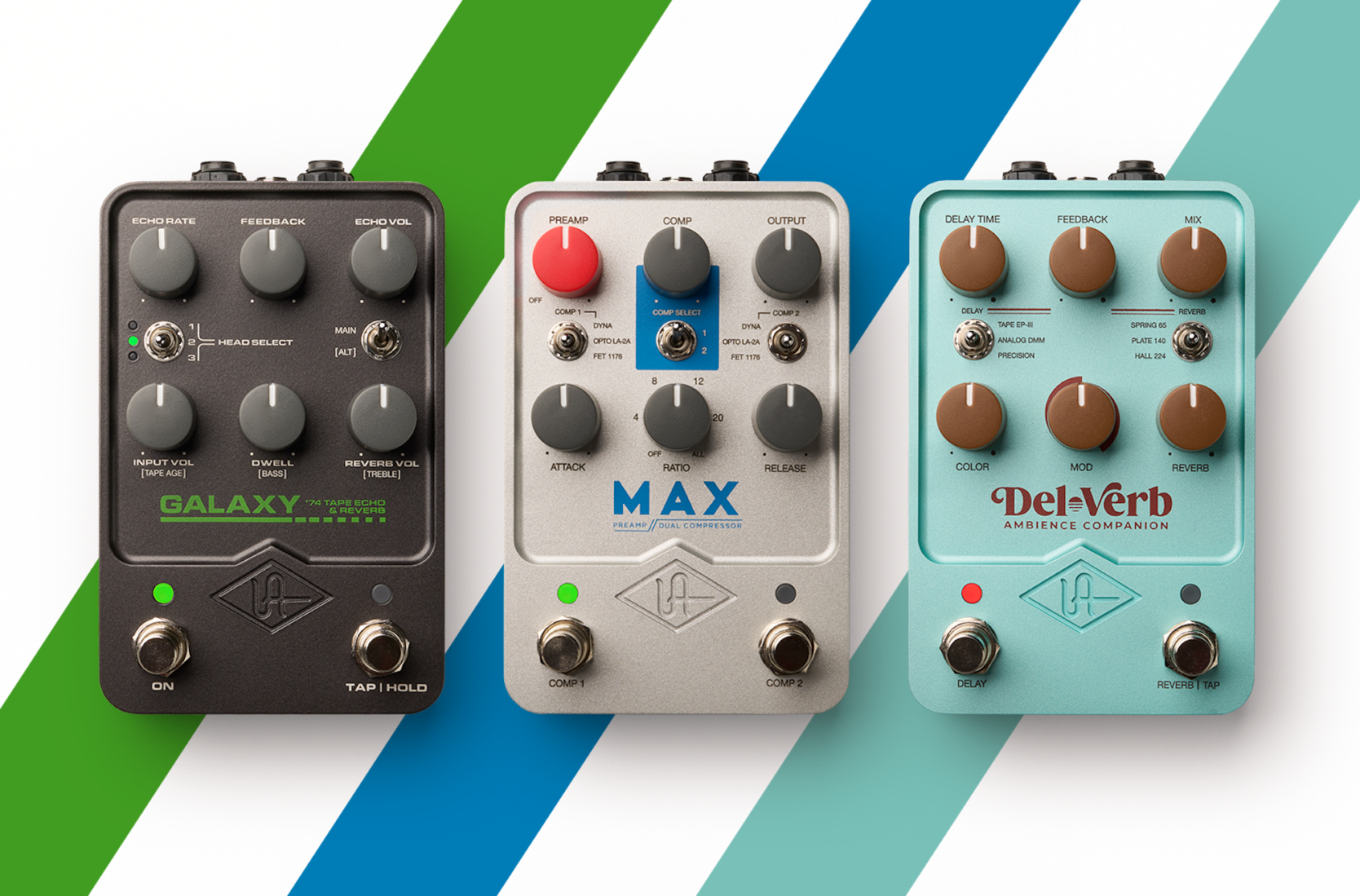When it comes to music recording hardware, one could argue that Universal Audio has created more powerful products for a wider variety of artists than any other company in the industry. With a history dating back 65 years (and its modern revival beginning in 1999), the California-based company has launched everything from fancy studio gear to simple plug-and-play recording interfaces for bedroom hobbyists and artists on a budget — and its Apollo line of interfaces is still the standard for recording musicians.
But within the last couple of years, Universal Audio added a new direction. In 2021, they released a trio of high-end guitar effects pedals, the Golden Reverberator, Starlight Echo Station and Astra Modulation Machine. The next year, they followed that up with three amp simulator-based guitar pedals — each centered around a historic amplifier — bringing new flexibility, options and clarity to a corner of the market usually reserved for crunchy “Marshall in a box” type of effects.
While these world-class pedals aren’t for everyone (they carry a price tag of $399), they’ve effectively redefined the upper echelon of guitar effects. Much like how the Apollo and OX Amp Top Box have become staples in recording, Universal Audio’s pedals have landed on the boards of artists regardless of genre and venue size.
SPIN spoke with two of the people most responsible for Universal Audio’s new pedal line, James Santiago, senior product designer of guitar products and Tore Mogenson, senior product manager of guitar products about the birth of the products and how they’ve shaped the established gear company.
SPIN: What was it like to push Universal Audio into the guitar pedal market after the company had primarily focused in other areas for so long?
Tore Mogenson: Universal Audio has always been a guitar company. If you walk through the offices, there are guitars everywhere. I’ve never worked in a company that had so many guitar players and so many guitars laying around. So even though we didn’t make guitar-specific products earlier, it’s always been a guitar company. When we started talking about the idea of doing guitar pedals and guitar stuff in general, everybody got really, really excited. Everybody wanted to be part of that project. It just naturally snowballed from there. The passion — which is the most important thing at the end of the day — has been there from the get-go. It wasn’t like “Oh, let’s look at the numbers for this thing and see if it makes sense.”
The other thing is that a lot of guitar players like old stuff. They like things that basically haven’t been changed since the early ‘50s or late ‘40s, because they sound classic. One of the things that Universal Audio has really built itself on as a brand is the fact that we are extremely good at emulating old vintage music equipment digitally — spring reverbs, tape echoes, guitar amps, compressors, you name it. So we already have this enormous treasure trove of algorithms to look into and go “Oh, man, that would be so awesome to have as a guitar player.” That was really the start of it.
James Santiago: I think one interesting point is that you rarely find somebody who’s a math genius or numbers person who’s also a really wide-eared musician type, but we have a couple of people on our team like that. They understand this deep connection to music and sound, and they also understand how to invent the modeling technology to replicate it. Everyone has their own methods for doing this kind of work, so it’s amazing to me to sit there and figure out how we’re going to do something. You’re just playing around with this and that, and then you realize you’re recreating and inventing a new path to make these models not just sound right, but also feel right. There’s a lot of disconnection between something sounding the same and feeling the same, just like a picture can look just like a thing without being the thing. When you pick up a guitar with an amp and a pedal, it feels a certain way. Those are nuances that we spent a few years chasing down. It took years to get to a point where we felt like we could actually do this, and Tore had the great idea to take the amps and shove them into a pedal. I’m still kind of shocked that it worked. It was a lot of a lot of long nights to get that kind of heavy horsepower into something stompbox size.
What was the key to figuring out that “feel” side of the pedals, particularly when replicating vintage gear?
Santiago: Well the weird thing [with vintage guitar equipment] is that you can have two of the exact same thing, and yet one of them feels good and one of them feels bad. A lot of guitarists have experienced that, where even though two amps, guitars or pedals are identical on paper, they don’t sound the same. So a lot of our time early on was spent finding what we call the “golden reference units” of things. We can’t just listen to one Vox AC30, we have to listen to multiples. Then somebody goes “Why does this one feel stiff? Why does this one feel soft and compressed and pillowy?” There’s this whole way a pedal or an amp blooms, and it’s more to do with how you feel it, in that it’s almost not even sonic.
I blew up a lot of speakers when we started developing these products, because I wanted to see what it sounded like when it’s whisper quiet and when you get a little too loud, right before it blows. We did this crazy high-speed footage of it and documented all the different volumes, and a lot of it just comes down to knowing the gear. If you’ve spent years playing something, you know it well — and there’s no amount of homework that can make you an expert like that overnight. I really feel confident, because each person on this team hasn’t just spent a week researching this project — it’s decades of experience. We have this team where we all have these weird little corners that we’re experts in. You put that together, you end up with a team that not only shares ideas, but can figure things out.
Mogenson: Another thing that we really tried to do, specifically for the amp pedals that we have, is to make sure that they react with other pedals exactly as they should. That’s extremely tricky, because an amp will typically not behave the same way as a pedal would. It was just another thing to add to that layer. One of the amazing things of working at Universal Audio for this project was their incredible willingness to do this right. We’re not satisfied with going “Oh, it’s 90% of the way there.” It has to be to the point where we can’t even distinguish the difference. When we do these recreations, we make them with warts and all. We’re not trying to make a pretty picture version of the thing. We do everything. If you take the Starlight Echo Station and turn up the feedback enough, we’ve even added the hiss that comes from the original pedal, because that’s part of how it sounds when it starts going crazy. We’re modeling all of the bad stuff as well just to get it to behave the same way.

Even outside of pedals, home recording got a huge boost in popularity during the pandemic. Considering that your pre-pedal guitar products were primarily recording devices, did you see a big change in how those were used?
Mogenson: Aside from the fact that the whole background of why a lot of this stuff has happened is very sad and depressing, I think we live in an amazing time where musicians in general can create music in such an easy way with such high results. Back when I started with 4-track tape decks, the sound was something that you literally couldn’t put out in any sort of professional manner on your own. You’d be forced to go to a professional studio — and you had to have a label backing you, because you couldn’t afford that on your own — so I think there was a lot of creativity lost back then. Now, for a very small amount of money, anybody who feels like they want to create something musically can do it and get it distributed out into the world. That’s an amazing thing to see.
Santiago: One of the things about recording at home for guitar players — and drummers — is that you make a lot of noise when recording. I think the first product we did only for guitar players was the OX Box, which you see in a lot of home studios now. It literally solved the premise of “How do I get my Marshall stack to sound like it’s supposed to when I’m recording at home?” Not everybody is an expert at the 10 different microphones, how to put them on, what the speaker is, what the frequency ranges are, or how to track them. So we took that and said “Here’s something for a guitar player where they can go into their spare bedroom with their 100-watt Marshall JCM800, plug it into this box, put on headphones and go “There’s my sound!” Even though we make plugins, there’s nothing that’s going to replace the amp you’ve taken to 1,000 gigs, spilt beer on and replaced the tubes, because it’s aged with you. It’s enabling users to take what gear they have and love, and somehow bring it into the digital world.
Speaking of digitizing vintage gear, where do you see the gear side of the music industry going in the next handful of years?
Mogenson: I think everything is going to be smaller, more portable and more flexible. I love my big stacks for metal, but man, I don’t want to carry that stuff around anymore. I just want something that sounds as good, but I can put in a backpack and get to a gig. I can make the sound guy happy because I’m not playing 100 watts, I’m just going straight into the front of house and it sounds the same every night. And when I’m done, I can actually take that same product back home and record with it. I can plug headphones into it so I can practice and get the same sound everywhere. I think that’s really one of the things that we’ll see even more of, just to be more flexible and easier and convenient to work with.
Santiago: Also, this old gear is hitting a 50-to-60-year mark, so even if you have this gear and don’t mind the size, it’s probably taken a beating to where you can’t reliably take it on the road as much anymore. You don’t see many people driving around in horse-drawn carriages on a freeway. So the question is how do you get those sounds to a new generation of people, so they can still hear them — so they can take that and do something completely different with it. If you were to look back at the history of rock guitar, when Jimi Hendrix was breaking new ground, the Marshall stack had just been invented. He was using effects nobody had heard before, because they were brand new. So you have to imagine that if Jimi Hendrix was alive today, he wouldn’t be playing 40-year-old gear, he’d play the coolest newest creative thing today. So how do we bring the history up to a modern level where it’s usable as it was, but also gives you something else to help you find something creative.
An 18-year-old music student is not going to have a room full of tweed amps and Echoplex machines unless their dad or grandfather had them and handed them down. So I feel this responsibility for us to be historians of tone to get this stuff modeled where you can now get that on a laptop. I used to wish I could have a little box that gave me all of my hero’s sounds in one little place, and now I get to do that and be the guardian of tone. I get excited thinking about it, because these are tools we want to use. You never know who’s going to be the next Beatles or the next Rolling Stones. Those bands made a sound, and I want to see somebody else take those sounds and do something night and day with it.

Does that sense of responsibility as the “tone historians” put an extra emphasis on helping the next generation of musicians connect with previous ones — and each other — for you?
Santiago: If you play guitar or you’re in the music world, you learn to communicate with people through making music. It’s a different language, and it’s something that brings people together. So when you talk about people going to play live music again, the important part is people being in a room together, creating together and being able to use these tools — whether it’s the computer running an Apollo that’s recording your music or you making a demo, bringing it to your band and writing songs with a friend or even just playing a gig somewhere. Sometimes an instrument can be a very isolating thing when you’re learning and writing, because you’re in a room learning your craft. But the hope is that you get to communicate that with your friends in a band. I get so excited when I see someone making music or getting joy out of the stuff we’ve made. There’s nothing cooler when you put on a pedal and it’s something you didn’t expect. You smile like “Oh that’s cool” because it’s a new experience. Hopefully these things inspire people to do something creative.
Mogenson: I totally agree with James. Having been in this business for more than 20 years now, I still get excited if I go to a local club and there’s some guitar player or bass player who has one of our pedals on their pedalboard. I know they’re having a great experience, and we had just a tiny bit to do with that experience — which hopefully they’re really happy about. At the end of the day, it’s about the joy of music and about being creative. As much as James and I can learn guitar gear, tones and the difference between all these things — and we’ve spent way too much time worrying and thinking about those things — it’s about music. It’s about being creative and bringing something new into the world that nobody has heard before.





